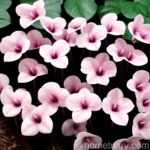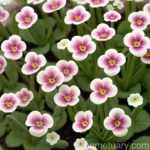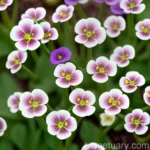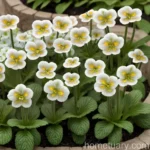The Wonderful World of Drumstick Primula (Primula denticulata ‘Lilac Globe’)
Welcome to the enchanting world of the drumstick primula, also known as Primula denticulata ‘Lilac Globe’. This delightful flowering plant is a gem in the garden and offers an array of stunning features that are sure to captivate any plant enthusiast. In this comprehensive guide, we will explore everything there is to know about the drumstick primula, from its cultural requirements to its propagation and potential uses. Let’s embark on an exciting journey as we delve into the intricate details of this remarkable plant.
What is Drumstick Primula?
The drumstick primula, scientifically known as Primula denticulata ‘Lilac Globe’, is a visually striking flowering plant that belongs to the Primulaceae family. With its spherical clusters of delicate lilac flowers atop stout stems, this unique primula species adds a touch of elegance and charm to any garden landscape. The drumstick primula is a perennial plant that boasts a compact, low-growing habit, making it an ideal candidate for borders, rock gardens, and woodland settings.
Botanical Classification
Kingdom: Plantae
Order: Ericales
Family: Primulaceae
Genus: Primula
Species: Primula denticulata ‘Lilac Globe’
Key Takeaways: Drumstick Primula (Primula denticulata ‘Lilac Globe’)
Before we dive into the specifics of drumstick primula care and cultivation, let’s take a moment to outline the key takeaways that will be covered in this guide.
- Essential cultural requirements including water, sunlight, fertilizer, and soil for drumstick primula.
- Pruning techniques to maintain the health and vigor of the plant.
- Propagation methods for expanding your primula collection.
- Exploring the suitability of drumstick primula for container gardening.
- Common diseases that may affect drumstick primula and their diagnosis.
- Identifying potential pests and implementing pest control measures.
- Uncovering intriguing and practical tips from experienced botanists.
- Discovering fun facts about drumstick primula that add to its allure.
- Providing links to external resources for further exploration.
Now that we have a clear roadmap of the topics to be covered, let’s begin our exploration of drumstick primula by delving into its cultural requirements.
Culture
Cultivating drumstick primula requires careful attention to its specific cultural needs to ensure its optimal growth and overall health. From appropriate watering practices to suitable soil conditions, let’s take an in-depth look at the essential elements of drumstick primula culture.
Water
Drumstick primula thrives in consistently moist soil, making it essential to provide regular watering to keep the soil evenly moist. However, it’s crucial to avoid waterlogged conditions, as excessive moisture can lead to root rot and other detrimental issues. During periods of prolonged dryness, additional watering may be necessary to maintain the desired soil moisture level.
Sunlight
In terms of sunlight requirements, drumstick primula prefers partial shade to full shade, especially in regions with warmer climates. Protecting the plant from direct afternoon sun is particularly important to prevent leaf scorch and maintain its vibrant appearance. Selecting a location with dappled sunlight or light shade is ideal for promoting healthy growth and prolific flowering.
Fertilizer
When it comes to fertilization, drumstick primula benefits from a balanced, slow-release fertilizer applied in early spring as new growth begins to emerge. Avoid over-fertilizing, as excessive nutrients can lead to lush foliage at the expense of flower production. A controlled-release fertilizer specifically formulated for flowering plants can provide the necessary nutrients to support robust growth and abundant bloom production.
Soil
Drumstick primula thrives in well-draining, humus-rich soil with a slightly acidic to neutral pH range. Amending the soil with organic matter such as compost, leaf mold, or well-rotted manure can improve its texture and fertility, creating an optimal growing environment for the plant. It’s essential to ensure that the soil remains consistently moist but not waterlogged, as adequate drainage is crucial for the health of drumstick primula.
Pruning
Pruning is a valuable practice for maintaining the vigor and tidy appearance of drumstick primula. As the flowering season comes to a close, the removal of spent flower heads can promote the development of new blooms and prevent the plant from expending unnecessary energy on seed production. Additionally, trimming back any damaged or yellowing foliage can enhance the overall aesthetic appeal of the plant and reduce the risk of disease.
Propagation
Propagating drumstick primula offers an opportunity to expand your collection and share this captivating plant with fellow gardening enthusiasts. This charming primula can be propagated through division, which involves carefully separating the plant into smaller sections, each containing viable roots and shoots. Division is best carried out in early spring or immediately after the plant has finished flowering to allow the divided sections to establish themselves before the onset of winter.
Container Popularity
Drumstick primula’s compact growth habit and stunning floral display make it a popular choice for container gardening. Whether grown in individual pots or incorporated into mixed planters, the striking appearance of drumstick primula adds a delightful touch to outdoor spaces, patios, and balconies. When selecting a container for drumstick primula, ensure that it provides adequate drainage and sufficient room for the plant’s roots to expand.
Common Diseases
While primarily resistant to many diseases, drumstick primula may occasionally encounter certain fungal infections, particularly in conditions of excessive moisture and poor air circulation. Common diseases that may affect drumstick primula include powdery mildew and leaf spot diseases. Maintaining proper cultural practices, such as providing good air circulation and avoiding overhead watering, can significantly reduce the risk of these issues.
Disease Diagnosis
Diagnosing diseases in drumstick primula involves closely inspecting the plant for symptoms such as powdery white patches on the foliage, yellowing or browning of leaves, and the presence of dark spots or lesions. If signs of disease are observed, it’s essential to promptly address the issue by removing infected plant material and implementing appropriate treatments, which may include fungicidal sprays or cultural adjustments to create less favorable conditions for disease development.
Common Pests
Despite its resilience, drumstick primula may attract certain pests that can impact its health and appearance. Common pests that may affect drumstick primula include aphids, spider mites, and slugs. Regular monitoring of the plant for signs of pest activity, such as distorted foliage, stippled leaves, or visible pests, can help in early pest detection and the implementation of targeted control measures.
Botanist’s Tips
1. Companion Planting:
Pairing drumstick primula with shade-loving companions such as hostas, ferns, and tiarellas can create visually appealing and harmonious garden displays, capitalizing on the contrasting foliage textures and vibrant floral hues.
2. Mulching:
Applying a layer of organic mulch around the base of drumstick primula can help retain soil moisture, suppress weed growth, and improve the overall soil structure, fostering an environment conducive to optimal plant growth.
3. Overwintering:
In regions with harsh winters, providing a protective mulch layer around drumstick primula can shield the plant’s roots from freezing temperatures and ensure its survival through the colder months.
4. Seasonal Care:
Adhering to a seasonal care routine, including regular monitoring for pests and diseases, adjusting watering practices in response to changing weather conditions, and providing appropriate fertilization, can contribute to the long-term health and vibrancy of drumstick primula.
Fun Facts
- The genus name “Primula” is derived from the Latin word “primus,” which means “first,” signifying the plant’s early spring bloom time.
- Drumstick primula is native to the Himalayan region, where it thrives in mountainous habitats with cool temperatures and moist conditions.
- The distinctive spherical flower clusters of drumstick primula bear a striking resemblance to the shape of drumsticks, which inspired its common name.
- In addition to its ornamental value, drumstick primula has been used in traditional herbal medicine for its purported medicinal properties, particularly in the treatment of respiratory ailments.
Links to External Resources
For further exploration of drumstick primula and related topics, the following external resources offer valuable insights and practical guidance:
-
Royal Horticultural Society – Primula denticulata ‘Lilac Globe’
-
North Carolina State University Extension – Primula denticulata Fact Sheet
-
American Primrose Society – Cultivation and Care of Primulas
In conclusion, the drumstick primula (Primula denticulata ‘Lilac Globe’) is a captivating plant that enchants with its spherical clusters of delicate lilac flowers and compact, low-growing habit. By understanding and implementing the essential cultural requirements, propagation methods, and tips for maintaining its health and vigor, you can cultivate a thriving display of this remarkable primula species. Whether grown in garden borders, containers, or woodland settings, the enchanting allure of drumstick primula is sure to make it a cherished addition to any landscape.
So, what are you waiting for? Embark on your journey with drumstick primula and discover the joy of cultivating this enchanting flowering plant!
Remember, the art of gardening is a journey, and every plant has a story to tell.
Happy planting!
References
-
“Primula denticulata ‘Lilac Globe’.” Royal Horticultural Society. https://www.rhs.org.uk/plants/11402/i-primula-denticulata-i-lilac-globe/details
-
“Primula denticulata.” Missouri Botanical Garden. https://www.missouribotanicalgarden.org/PlantFinder/PlantFinderDetails.aspx?taxonid=258717&isprofile=0&
-
“Primula denticulata.” North Carolina State University Extension. https://plants.ces.ncsu.edu/plants/primula-denticulata/
-
“Cultivation and Care of Primulas.” American Primrose Society. https://www.americanprimrosesociety.org/Cultivation-Care















